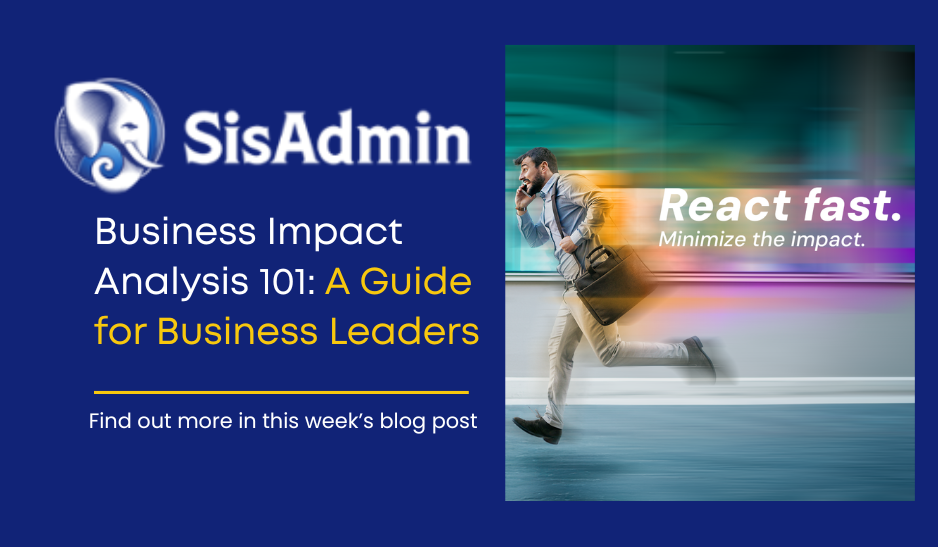Business Impact Analysis 101: A Guide for Business Leaders
- 2 mins
Uncertainty can be more damaging to a business than a natural disaster. Many leaders believe they will know what to do when a crisis happens. But without a clear plan, even small interruptions can spiral out of control.
That is why smart business owners make a Business Impact Analysis (BIA) the foundation of their Business Continuity and Disaster Recovery (BCDR) strategy.
What is a Business Impact Analysis?
A BIA takes the guesswork out of disaster recovery. It helps you identify what is most important, how long your business can afford to be offline, and how quickly you need to restore operations.
A proper BIA looks at more than IT systems. It gives a full view of your business, showing how different functions connect and what the real costs of downtime could be. Without it, recovery decisions often miss the mark and create bigger problems.
In short, a BIA helps you recover faster with less disruption.
Key Components of a Strong BIA
A BIA turns a general continuity plan into an actionable recovery roadmap. It ensures your priorities align with what matters most, keeping operations running, meeting customer expectations, and protecting long-term stability.
Here are the core components:
- Critical business functions
Every organization has operations that cannot stop. Think customer service, payroll, or order processing. Identifying these functions is step one. - Dependencies
Functions often rely on people, applications, or outside vendors. Mapping these dependencies ensures your recovery plan reflects the real complexity of your business. - Impact assessment
Downtime has many costs, from lost revenue to legal risks to damaged reputation. A BIA measures the consequences, so leadership knows exactly what is at stake. - Recovery objectives
Two measures guide recovery: RTO (Recovery Time Objective), which defines the maximum acceptable downtime, and RPO (Recovery Point Objective), which sets how much data you can afford to lose. Together, they shape realistic recovery goals. - Prioritization
Not every process is mission-critical. A BIA helps you rank priorities, so resources go where they are needed most.
Simple Steps to Conduct a BIA
You do not need a complicated playbook to get started. Here is a straightforward approach:
- Plan the scope: Define what departments or functions you will analyze first.
- Gather data: Use interviews or surveys to understand what employees rely on and what would happen if those resources failed.
- Analyze findings: Look for patterns, define RTOs and RPOs, and set realistic recovery goals.
- Document results: Summarize everything in a report that guides your continuity and recovery planning.

